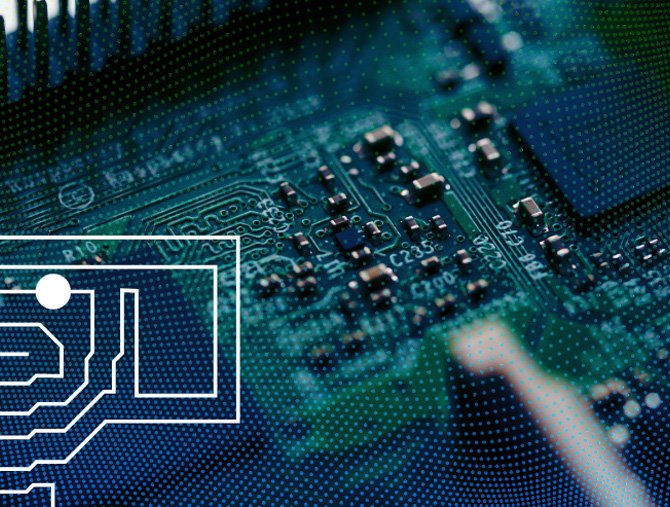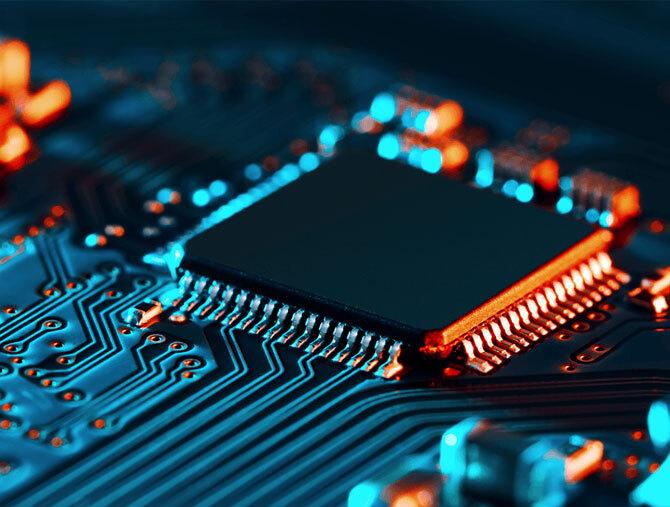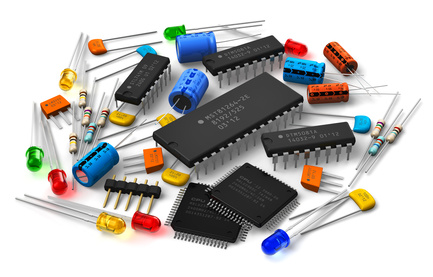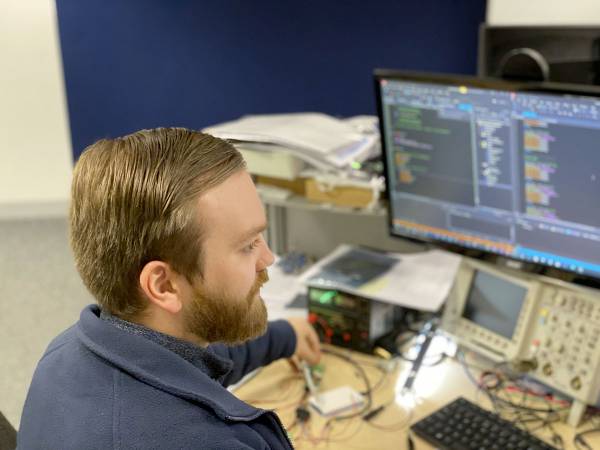
Embedded System Design Fundamentals
Computers and embedded systems are based on two fundamental components: hardware and software. The hardware contains all of the physical pieces that actually do the computing (processor, memory, etc.), while the software is everything else (operating system, code to run on it). Hardware itself is also broken up into two main areas: digital and analogue. Digital systems are driven by 1s and 0s, while analogue devices rely on physical quantities (current, force, etc.) to represent the information they process (waveforms). Engineers generally use one of these types of components if it is more efficient for their application; otherwise, they will try to find an efficient way of combining both digital and analogue components together.
Defining the Requirements of Embedded Systems
The first step in the design process is to define requirements. When specifying what an embedded system must do, there are several important issues that engineers need to take into account. These requirements will determine how effective and efficient the final product is, which has a large impact on whether or not it sells well.
The following items are some of the most common things considered during the requirements phase.

- The embedded system must have a specific set of functionalities, given the application it is being used for. If an application is too simple or too complicated, then there is no need to design a complex system to handle it. This also makes the product more expensive if there are unnecessary components doing nothing but taking up space and power.
- The embedded system must have a certain power budget, or how much energy it can use to fulfil the requirements. If all of the components are low energy devices, then this will allow for greater battery life in portable computers. Alternatively, if there are high power devices being used (like motors), then the designer needs to take into account that they can take up large amounts of energy, which in turn requires additional space and weight to hold the batteries.
- The components must work together efficiently. If one component takes up too much time or power, it could mean that other devices may need to compensate for it, taking away their own efficiency or making them larger than they would otherwise be if they were not working together.
- The embedded system needs to be cost-efficient, regardless of whether it is manufactured for commercial or residential use. If the components are too expensive, this could cause up-front and maintenance costs to be more than the consumer would like and therefore never purchase it. This will also prevent certain products from becoming commercially viable if they need to be expensive in order to work properly.
- The system needs to have a certain size, which is primarily dictated by the location where it will primarily be used. For example, if an embedded computer is intended for use in a car, then it must be small enough to fit anywhere there would normally be room for a human being. This has a major impact on the components used, as they will be more compact if the system needs to fit in a certain shape.
- The embedded system must have a minimum battery life or some other power source besides its own batteries. This is crucial for any applications where the computer cannot be plugged into an outlet for very long periods of time (i.e., drones, robots, etc.).
- The system must be upgradeable. This will allow it to adapt to future uses that are not currently known by the Maker. If the computer is unable to update its software or components, then it may become obsolete when newer technology becomes available later down the road. This also applies to products that are designed for the Maker, such as a mobile phone. If the phone cannot be updated to add new features or remove any buggy ones, it will become obsolete very quickly and therefore have a low resale value when the consumer is ready to get rid of it.
Designed the Software and Hardware Components
 The next step in the process for embedded system design teams is designing the hardware/software. In most systems, the hardware and software are designed simultaneously. For some embedded systems, however, it is sufficient to first design the software and then the hardware will follow. This type of system is called a software-defined radio, where the radio has no dedicated electronic components but rather all of its functions are created using code on a general-purpose computer where there is more memory and a faster clock speed for the software to run on.
The next step in the process for embedded system design teams is designing the hardware/software. In most systems, the hardware and software are designed simultaneously. For some embedded systems, however, it is sufficient to first design the software and then the hardware will follow. This type of system is called a software-defined radio, where the radio has no dedicated electronic components but rather all of its functions are created using code on a general-purpose computer where there is more memory and a faster clock speed for the software to run on.
Designing the hardware/software is an iterative process, meaning that it will continuously loop through certain steps until all of the specifications are fulfilled. This is necessary because most embedded systems will need to be tested with physical components before any final decisions can be made about what was or was not successful. Most of the time this stage will require more than one iteration.
Designing an embedded system is a very challenging task, especially if the designer has never worked on such a project before and does not know what to expect. There are many factors that need to be taken into account, and each one of them can turn out to be challenging in and of itself.
Things to Consider in Embedded System Design
The size and weight of the system needs to be small enough that it can be carried or worn by a human being, if that is what the system is intended for. This becomes more challenging when creating an embedded device that needs to be connected by wires to other devices because wires add bulk and weight compared to wireless connections.
This also has an impact on the components used, as they will be smaller if they can be closer together. However, this poses another problem in that there is the risk of interference between components because each one of them needs to send and receive data.
Power source capability is also a challenge for embedded systems, primarily because there are different types of power sources, each one with its own set of limitations. For example, batteries present one challenge in that they can run out quickly whereas other power sources cannot (i.e., power cords).
Once embedded systems are designed for hardware and software, they need to be tested.
Testing Embedded Computing Systems
 This stage will require more than one iterative process because testing can reveal many flaws that will require redesigning. Testing the hardware is usually the easiest part of this stage because it requires physically assembling all of the parts together to create a cohesive system that can be tested in its entirety. If there’s a problem identified, then often, it must be redesigned and tested again.
This stage will require more than one iterative process because testing can reveal many flaws that will require redesigning. Testing the hardware is usually the easiest part of this stage because it requires physically assembling all of the parts together to create a cohesive system that can be tested in its entirety. If there’s a problem identified, then often, it must be redesigned and tested again.
Testing the software is more difficult because there are many ways to test an application program, so it can be difficult to determine which type of testing will yield the best results. Some types of tests that can be performed on a computer program include functional testing (can all tasks function correctly), regression testing (tests that can be run in case new features are added), compatibility testing (can the program work on all of the intended platforms), white box testing (testing internal workings of a program), and black box testing (testing only the surface functionality).
Testing an embedded system is especially important because they are often used in business-critical situations, so it is imperative that the system functions correctly in its intended operating environment.
Analysing Results
At this stage, final decisions about what was and was not successful can be made based on the test results from testing the hardware and software. This step is necessary because it will help determine which components should stay and which ones should be replaced or redesigned. With embedded systems, since they often have a lifespan of many years, it is important that they are designed correctly the first time so they will last as long as intended in their operating environment.
The steps to designing an embedded system can seem overwhelming at first. However, if these steps are done thoroughly, it will be much easier for the designer in the next phase, which is to create the system.
This is just one of the reasons why it’s always best to outsource embedded system design to experts so that they can overcome the challenges in embedded computing system design that are likely to appear during the process.
Embedded System Design Expertise from DSL
Embedded system design is a process of designing a computer system that is intended to perform a dedicated function within a larger mechanical or electrical system. at DSL Ltd, we have a lot of experience in this field, and are always looking for ways to make the evaluation process easier and more cost effective for our customers. We have a number of embedded development kits available that make it easier to evaluate proof-of-concepts with embedded hardware. You can purchase our kits here.
However, if you are looking for a company to work with on a specific embedded computer systems project, then call DSL today and one of the experienced team will be happy to discuss your requirements.

